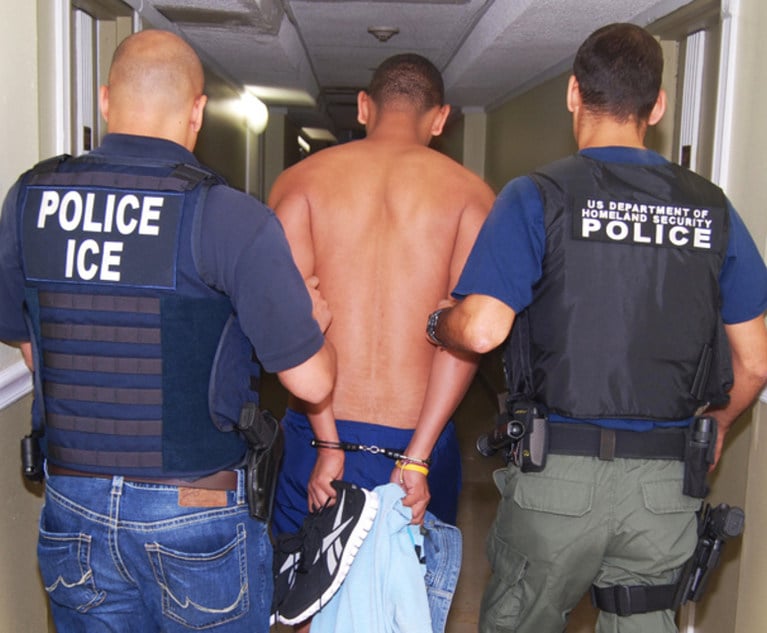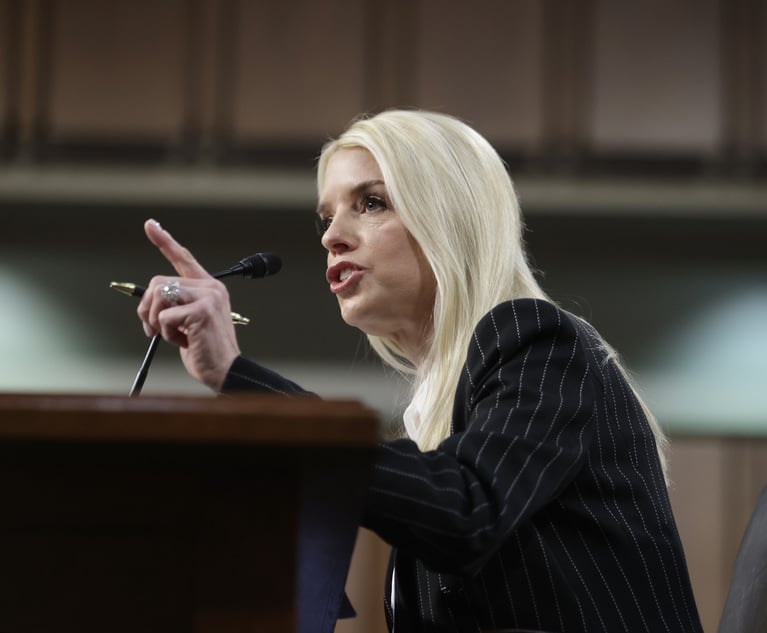What Businesses, Employees Need to Know About Global Travel Amid COVID-19
In the United States, the coronavirus-related impediments to business immigration have been amplified by recent presidential proclamations, purportedly enacted to protect jobs in the face of the pandemic.
September 17, 2020 at 12:34 PM
6 minute read
 Jessica A. DeNisi, Klasko Immigration Law Partners
Jessica A. DeNisi, Klasko Immigration Law Partners Until recently, the 21st century has been a period of increasing global mobility and travel. Airplane travel, once a rare luxury of the privileged or high-powered executives, has become commonplace and multinational companies have operations, employees and financial interests spread across the globe, requiring the daily transfer of people internationally. All of this changed in spring 2020 when the COVID pandemic significantly curtailed global travel unlike any other time in our history. This sudden and drastic decrease in travel created challenges for businesses in moving their employees, executives and contractors around the world. These restrictions even affect U.S. citizens, as countries shut their borders to U.S. citizens because of COVID infection rates here.
In the United States, the coronavirus-related impediments to business immigration have been amplified by recent presidential proclamations, purportedly enacted to protect jobs in the face of the pandemic. Until Dec. 31, U.S. entry is barred for H-1B, H-2B, L-1, and certain J-1 nonimmigrants if they were outside the United States on the effective date of the proclamation and did not hold a nonimmigrant visa in one of the relevant categories at the time, among other requirements. Immigrants are similarly barred from entering the United States. Although there are exceptions for both nonimmigrant and immigrant visas, mainly foreign nationals working in the U.S. national interest and immediate family of U.S. citizens, the viable options for foreign nationals are largely limited to investment visas; E visas for foreign nationals from certain treaty countries and EB-5 visas for immigrant entrepreneurs investing in a U.S. business and creating jobs for U.S. workers.
This content has been archived. It is available through our partners, LexisNexis® and Bloomberg Law.
To view this content, please continue to their sites.
Not a Lexis Subscriber?
Subscribe Now
Not a Bloomberg Law Subscriber?
Subscribe Now
NOT FOR REPRINT
© 2025 ALM Global, LLC, All Rights Reserved. Request academic re-use from www.copyright.com. All other uses, submit a request to [email protected]. For more information visit Asset & Logo Licensing.
You Might Like
View All
Lawyers' Phones Are Ringing: What Should Employers Do If ICE Raids Their Business?
6 minute read


3rd Circuit Strikes Down NLRB’s Monetary Remedies for Fired Starbucks Workers
Trending Stories
- 1Thursday Newspaper
- 2Public Notices/Calendars
- 3Judicial Ethics Opinion 24-117
- 4Rejuvenation of a Sharp Employer Non-Compete Tool: Delaware Supreme Court Reinvigorates the Employee Choice Doctrine
- 5Mastering Litigation in New York’s Commercial Division Part V, Leave It to the Experts: Expert Discovery in the New York Commercial Division
Who Got The Work
J. Brugh Lower of Gibbons has entered an appearance for industrial equipment supplier Devco Corporation in a pending trademark infringement lawsuit. The suit, accusing the defendant of selling knock-off Graco products, was filed Dec. 18 in New Jersey District Court by Rivkin Radler on behalf of Graco Inc. and Graco Minnesota. The case, assigned to U.S. District Judge Zahid N. Quraishi, is 3:24-cv-11294, Graco Inc. et al v. Devco Corporation.
Who Got The Work
Rebecca Maller-Stein and Kent A. Yalowitz of Arnold & Porter Kaye Scholer have entered their appearances for Hanaco Venture Capital and its executives, Lior Prosor and David Frankel, in a pending securities lawsuit. The action, filed on Dec. 24 in New York Southern District Court by Zell, Aron & Co. on behalf of Goldeneye Advisors, accuses the defendants of negligently and fraudulently managing the plaintiff's $1 million investment. The case, assigned to U.S. District Judge Vernon S. Broderick, is 1:24-cv-09918, Goldeneye Advisors, LLC v. Hanaco Venture Capital, Ltd. et al.
Who Got The Work
Attorneys from A&O Shearman has stepped in as defense counsel for Toronto-Dominion Bank and other defendants in a pending securities class action. The suit, filed Dec. 11 in New York Southern District Court by Bleichmar Fonti & Auld, accuses the defendants of concealing the bank's 'pervasive' deficiencies in regards to its compliance with the Bank Secrecy Act and the quality of its anti-money laundering controls. The case, assigned to U.S. District Judge Arun Subramanian, is 1:24-cv-09445, Gonzalez v. The Toronto-Dominion Bank et al.
Who Got The Work
Crown Castle International, a Pennsylvania company providing shared communications infrastructure, has turned to Luke D. Wolf of Gordon Rees Scully Mansukhani to fend off a pending breach-of-contract lawsuit. The court action, filed Nov. 25 in Michigan Eastern District Court by Hooper Hathaway PC on behalf of The Town Residences LLC, accuses Crown Castle of failing to transfer approximately $30,000 in utility payments from T-Mobile in breach of a roof-top lease and assignment agreement. The case, assigned to U.S. District Judge Susan K. Declercq, is 2:24-cv-13131, The Town Residences LLC v. T-Mobile US, Inc. et al.
Who Got The Work
Wilfred P. Coronato and Daniel M. Schwartz of McCarter & English have stepped in as defense counsel to Electrolux Home Products Inc. in a pending product liability lawsuit. The court action, filed Nov. 26 in New York Eastern District Court by Poulos Lopiccolo PC and Nagel Rice LLP on behalf of David Stern, alleges that the defendant's refrigerators’ drawers and shelving repeatedly break and fall apart within months after purchase. The case, assigned to U.S. District Judge Joan M. Azrack, is 2:24-cv-08204, Stern v. Electrolux Home Products, Inc.
Featured Firms
Law Offices of Gary Martin Hays & Associates, P.C.
(470) 294-1674
Law Offices of Mark E. Salomone
(857) 444-6468
Smith & Hassler
(713) 739-1250





